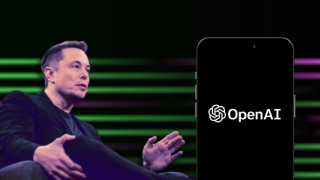Hong Kong-based HGC Global Communications is getting ready to announce a significant move in its digitisation. CEO Andrew Kwok can’t say precisely what it is. “There will be an announcement in the coming quarter,” he tells me from Hong Kong.
“This is one of the demonstrations of our digitalisation path – something that is changing the business of HGC down the road.”
He’s happy to talk in principle about the digitisation programme but won’t reveal more about the actual announcement he and his colleagues are planning. As a hint, he points to August’s announcement of a tie-up with Deloitte Cyber, an arm of the international consultancy and audit group.
HGC and Deloitte Cyber are joining forces to help clients in combating cyberattacks, with the support of HGC’s telecoms, data centre services, ICT solutions and broadband services at home and abroad.
That’s the latest stage in HGC’s business transformation, which he has been piloting for most of the nearly 20 years he has been in charge of the business.
“Cybersecurity is one of the most prominent considerations during this digital journey,” he says. “Riding on our fully-fledged digital infrastructure, we will continue to invest millions of US dollars in different phases to further enhance our capabilities in cybersecurity.
“The partnership between HGC’s Macroview and Deloitte can offer a 360-degree view of cybersecurity services across all industry segments to protect our customers’ digital assets and support them in operating an anti-risk environment while developing their business.”
HGC bought Macroview, a Hong Kong-based digital technology and IT infrastructure specialist, just two years ago, and the platform is playing a significant role in Kwok’s vision of the digitisation ofthe group, which is owned by US private equity investor I Squared Capital (ISQ). In January 2020 Kwok told Capacity: “The platform is just the beginning, with more enhancements to come in the near future that will further uplift HGC’s capabilities in providing sophisticated ICT solutions to meet evolving customer needs and reinforce our market leadership in the new digital age.”
The entire Macroview senior management team was integrated into HGC “and engaged in our daily business operation, coming together to achieve anticipated synergies and outstanding results”.
And that, hints Kwok now, marks the future for HGC, which ISQ bought for $1.9 billion in late 2017 from the telecoms operation of CK Hutchison, which owns the Three mobile operations around the world.
Within Hong Kong, HGC Global Communications owns local fibre infrastructure, supplying mobile backhaul to operators across the city, a special administrative region (SAR) of China.
Globally it runs an extensive network of subsea and terrestrial fibre. Kwok will mark his 20th anniversary in charge of the unit in January 2002 – a record that must be unrivalled. In that time he has gone from senior VP for international business of Hutchison Global Communications to president of international and carrier business at Hutchison Telecommunications (HK), to CEO of HGC Global Communications, from the moment ISQ’s acquisition was complete. Same job, essentially, but a startling 20-year record.
As someone with such a history, he quite reasonably has a fondness for infrastructure, despite the fact he is gently moving HGC to become a services company. “Infrastructure is something down to earth,” he says, expressing amazement that these strands of glass mean we can “send text or a photo” around the world.
“Throughout the past years we have still been talking about telecoms infrastructure,” he adds, noting that “capability depends mainly on speed, bandwidth and latency, and it still holds true.” Fibre is good for “10-20 years”, which must be good news for his shareholder. “I don’t think anything can replace fibre. This is pretty stable.” But having said that, he ventures that we are seeing “a whole new model of communication. What should a telco do?” he wonders.
There is still an “incentive to expand coverage, lay more fibre, improve speed, bandwidth, latency and reach”, he adds, but “digital infrastructure is riding on top of traditional infrastructure.
We will bring a new wave of human evolution.” There is scope for using fibre to connect those towers, for example, that are still connected by copper – 80% in some estimates, he says. “One the other hand, some of my friends are telling me the addressable market is small. Even if you stimulate [the market] to use more infrastructure, it’s still small.”
What Kwok means by digital infrastructure, on top of the fibre, is threefold: business efficiency, data management, and “how you can enlarge your business interface for your customer and yourself”.
He says, almost scornfully: “Email is a 1972 product. I use messaging apps, WhatsApp and WeChat.”
He doesn’t mean an end to fibre. “We will never stop our infrastructure expansion – in fibre, subsea, our speed, bandwidth and latency.”
But HGC’s solutions company is “building a digital platform”, he says. An open platform. It will allow HGC “to manage our evolution”, he says. “It is a physical platform we are building.”
And HGC will be able to interconnect with others via it. “It has three layers. At the very bottom layer is fibre and we will not change – we keep on building it. On top is the digital infrastructure platform.” And then on top of that is the application providers.
When? “Say it’s coming soon. It’s on the doorstep.”






